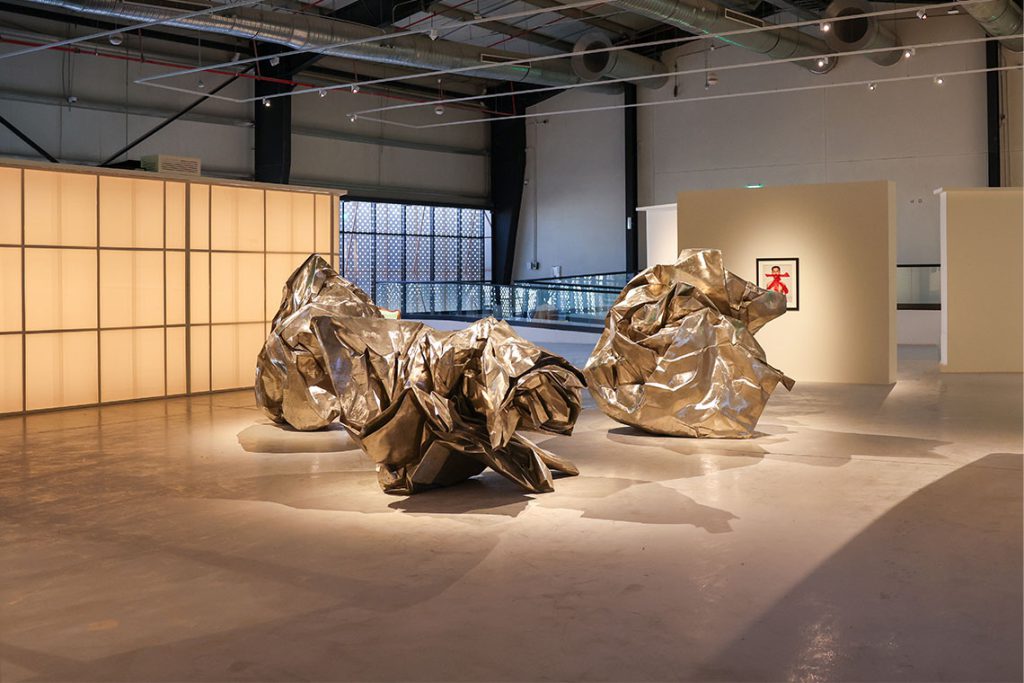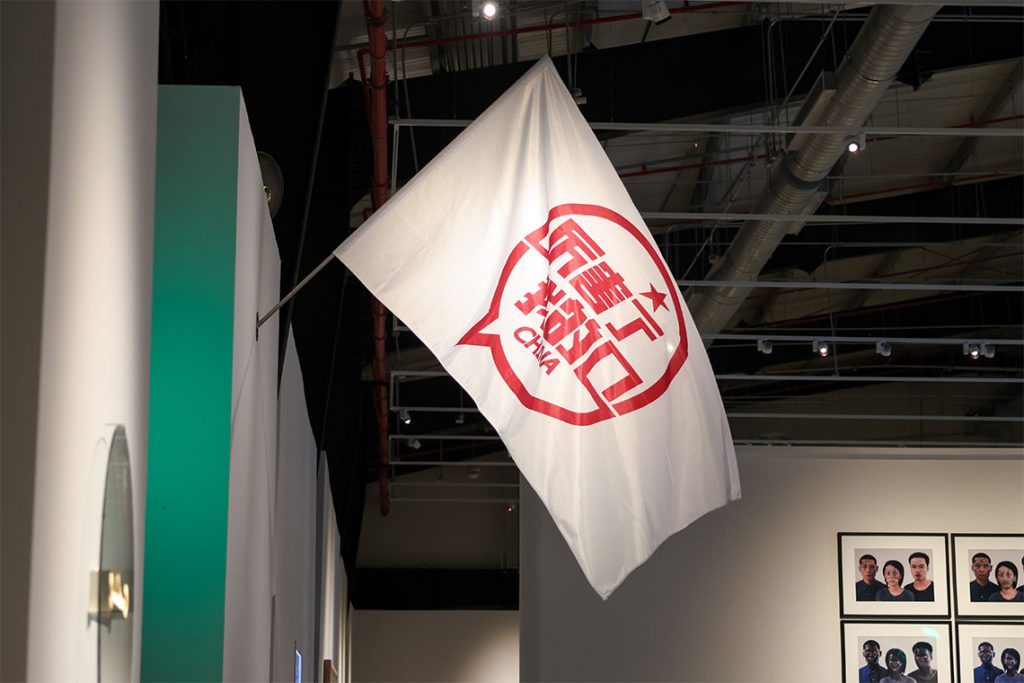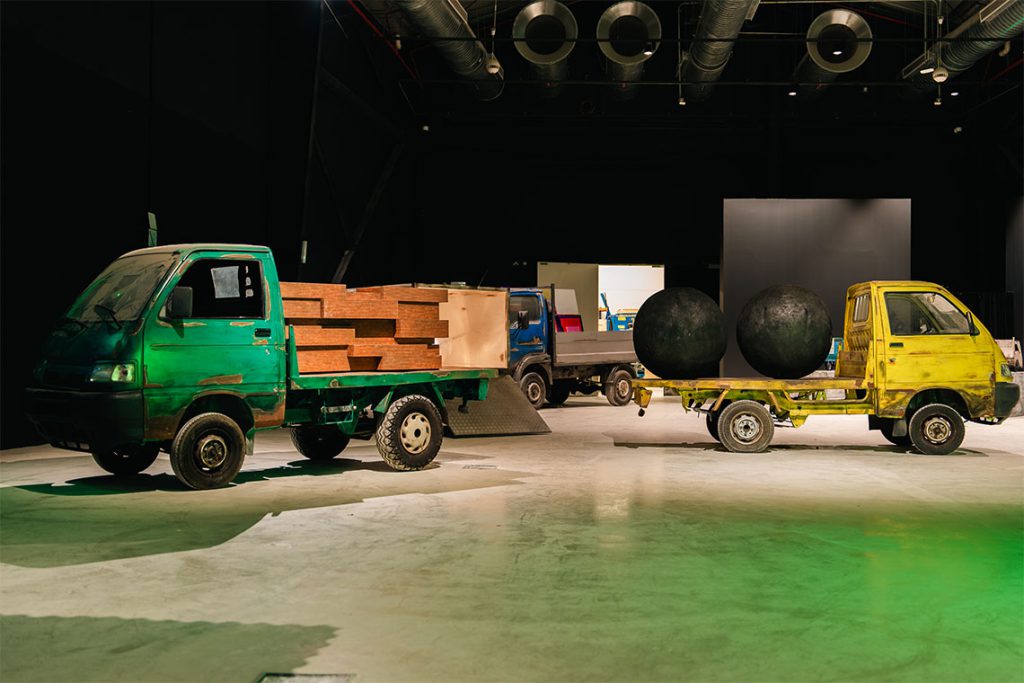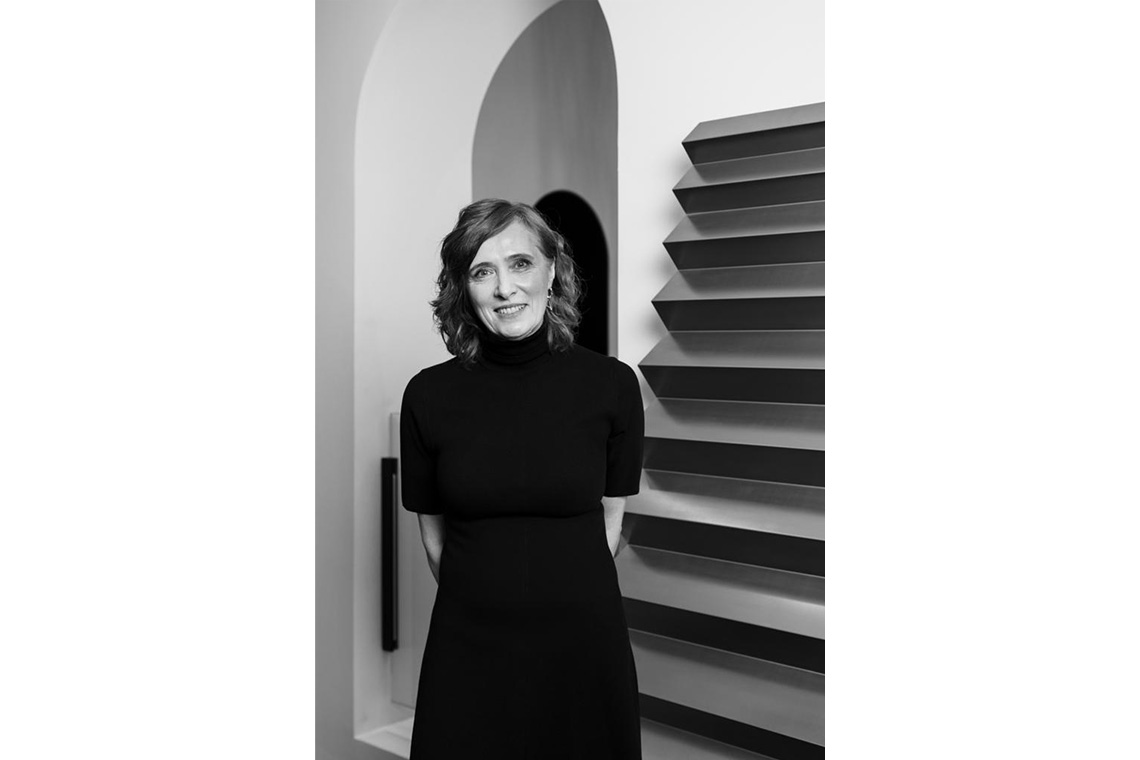The curator of the current exhibition at the Saudi Arabia Museum of Contemporary Art (SAMoCA) in Riyadh speaks to us about links between Arab and Chinese cultures and traditions as well as sharing perspectives on profound societal transformations.
Canvas: Let’s start with the exhibition title: The Writings of Today are a Promise for Tomorrow. Can you share where this came from and how it encapsulates the curatorial concept?
Martina Köppel-Yang: The title alludes to the importance of writing as a cultural, societal and political practice in both Arabic and Chinese cultures. The written word and calligraphy are among the many historical links between both cultures and the most highly regarded forms of communication, often linked to a spiritual process and considered a person’s xinji (heartprint).
The exhibition title also refers to a show I curated in Venice in 2015, entitled Performing Identity, Cultural Policy, and Artistic Strategies in China, 1978 to Today. It featured Zheng Guogu and Yangjiang Group and addressed aspects of commodification and capital as determining factors in contemporary Chinese society, and juxtaposed redundancy and stagnation with the notion of energy flow. Similarly, the current exhibition at SAMoCA thematises the concepts of energy flow and synergy, with writing understood in a larger sense as the trace of a meaningful act of participation and communication.
Even though many of the works were created more than a decade ago, the exhibition title wants to point to the future. The Chinese Avant-Garde of the 1980s and the contemporary movements since the early 90s not only changed the country’s culture but also its society. The Avant-Garde initiated one of the most transformative and most productive periods in Chinese contemporary history, not only from the point of view of creativity, but also the variety and the sheer number of artists and artworks. Even though the frenzy of this era was cut short several times by different political campaigns and finally by the radical change of the global art world after Covid-19, contemporary artists of Chinese origin continue to surprise through their creativity and their original works proposing alternative views.

Another central element of the exhibition is the garden. What are the parallels between cultures and the importance of this type of space in both Saudi Arabia and China?
Yes, the garden and writing are the lead-in to this exhibition. The Writings Of Today Are A Promise For Tomorrow invites the visitor into a garden in which plants and arts meet. The garden not only provides a structured approach and understanding of the works, but it is also a microcosm in which every object has its place and enters into a dialogue with the other occupants, as well as with the visitors to the garden. The balance between discipline and naturalness, a requirement for masterful calligraphy, links the field of writing with the domain of the garden. By definition, nature in an arranged order is a representation of creation or of the universe itself, designed for the appreciation of beauty, spirituality, contemplation and conviviality. Zheng Guogu’s and Yangjiang Group’s installation Indoor Courtyard (2004) is a remake of a literati garden and a central piece in the exhibition space. For these intellectuals, gardens were not only places of seclusion and self-discovery but also of gathering, creation, remembrance and cultural legacy. Many of the objects created in these gardens set new standards and became models for later generations.
The artists you’ve selected share their perspectives on profound societal change from across generations. How does this speak to an audience in Saudi Arabia?
I conceived the exhibition as a gathering of artists, not only having different cultural backgrounds but also stemming from different generations, as I do not want to put the emphasis on the aspect of cultural identity. This would limit the appreciation of the diversity and complexity of the artists’ creations. The exhibited artists convince through their great creativity and unexpected perspectives facing the profound transformation of our contemporary society and of the geopolitical situation.
When I visited Riyadh, I was struck by many things that reminded me of the China of the 1990s and early 2000s. The urban environment is in rapid transformation and new buildings and cities emerge quasi-overnight. The people I met during my stay showed an openness and curiosity that reminded me of my encounters with the Chinese generation of the opening-up-period. Change and loss of memory, of the old environment and ways of life, go hand in hand with the transformation of value systems which were important subjects in the contemporary art of the China during that period. Another topic is the relevance of culture within the global context, a subject I believe touches the Saudi public, too.

In the exhibition, Chapter 4 references The Art of War by Sun Tzu. How is this adapted into contemporary art?
I reference the stratagem “advance through retreat” elaborated in the Chinese military treatise The Art of War, attributed to General Sun Tzu. The treatise was not only the most important book on military strategy of its time but also continues to influence Eastern and Western military and business strategies. In art, the use of traditional practices, techniques and concepts in a contemporary context could be considered an application of this stratagem. In the exhibition, several artists apply this in their works. Perhaps the most emblematic example is Zheng Guogu’s photography, Me and My Teacher (1993), which is the first work visitors encounter upon entering the main exhibition hall. For this work, Zheng recorded the life of a homeless and intellectually challenged man living on the streets of his hometown of Yangjiang. The photography shows the artist squatting on the street next to his ‘teacher’, who smiles, seemingly content with his fate. Zheng was impressed by the young man’s unprejudiced views and simple lifestyle, free of conventions and material desires. The artist here advocates the retreat into an unattached way of life, and thus creates an alternative narrative to the official ideology of unrestricted economic development.
On another level, “advance through retreat” corresponds to the sublimation of the self – a concept inherent in works such as Yang Jiechang’s monochrome ink paintings, Chen Zhen’s video Jue Chang / Fifty Strokes to Each (1998) and Lin Tianmiao’s Seeing Shadows C14 (2006).
Can you discuss some of the site-specific works produced in Saudi Arabia for this exhibition?
One important aspect of Chinese literati culture is communication. Traditional literati gatherings usually took place in gardens or at emblematic scenic spots, and participants would compose poems or music, paint or write calligraphy on site. For this exhibition, we have three site-specific works. First, Chen Tong runs a painting studio in situ in the lobby of the museum. The studio, a pavilion designed by the exhibition’s scenographer Stéphane Villard, is a place of encounter.
The artist is a prolific ink painter, who is capable of capturing the essence of a moment with a few brushstrokes. To blend into the local context, he decided to dress like a local and visit sites related to his usual activities in China, for example a food market and a bookshop, and draw the people he encountered. He also made portraits of the staff and visitors to SAMoCA, thus setting up a place for exchange.
The second artist working in situ is Tian Dexi, who created sculptures assembled from discarded objects and materials found in Riyadh. Tian’s approach is economical, using the resources at hand. The created sculptures, made from materials and objects familiar to the local public, invite further dialogue.
Finally, Michael Lin is known for his large environmental paintings with floral and geometric patterns inspired by Taiwanese folk art. In his public work, Lin transforms these patterns into contemporary decor through the scale and choice of his colour palette. The reintroduction of the ornamental into contemporary art is the artist’s strategy to broaden the field. He does this by combining his paintings with different sportsgrounds, for example a tennis court or a skating ramp, where the public is invited to perform.

What other highlight works can you share?
In addition to those already mentioned, is Wang Du’s The Modes – Mode Arabe, American Mode, Russian Mode (2006–7). These three bronze sculptures portray discarded newspapers in different languages – Russian, English and Arabic – with the text only partially readable, as the ‘papers’ are crumpled and folded. The important news of the day they were published has lost its significance and substance and Wang proposes a witty critique of what he calls “the information consumption society”, further questioning our perception of reality.
Huang Yong Ping’s Powerful is My Mouth (2019) consists of a flag with a speech bubble, in which the title is written: “lihai le wo de kou“. Huang was one of China’s foremost conceptual artists and the work makes a pun of Chinese brand logos, political slogans and propaganda culture.
Qiu Zhijie’s video Ten Tang Poems (1994) shows the artist writing ten emblematic poems of the Tang Dynasty (618–906 CE). Tang poems are considered part of the Golden Age of Chinese poetry and even today every Chinese child has to learn some of the verses by heart. In Qiu’s video, the characters seem to be erased as the artist writes them. He actually inverses the writing process – from bottom to top, from left to right – as well as the order of the strokes, and then plays the video backwards. Thus, the paradigm of Chinese culture is deconstructed while simultaneously a new version is created, calligraphy turning into anti-calligraphy.
There’s also Adel Abdessemed’s large ensemble of sculptures entitled Judd (2017), consisting of eleven trucks. The artist conceives these as empty sculptures in the style of Donald Judd, hence the title. He then loads them with “specific objects” (also a reference to Judd) that have symbolic and autobiographic significance. Each truck represents a different story, and these vehicles – normally used to take away rubbish in big cities – are now carrying and delivering something beautiful.
The exhibition also includes some outstanding paintings, such as Yang Jiechang’s multi-panel painting On Ascension – Plumtree (2019), and Yan Pei-ming’s large oil painting entitled International Landscape – New Scene of Crime (2013). Yang Jiechang’s work is realised in the traditional Chinese technique called meticulous colour painting and is actually a self-portrait. The artist represents himself as a plum tree drifting over the horizon of a distant world, uprooted yet still flourishing. Yan Pei-ming’s painting has a narrative approach, and the International Landscape series includes representations of mostly nocturnal and empty sceneries, speaking of all the ineffable tales and possible horrors of our contemporary world.
The Writings of Today are a Promise for Tomorrow runs until 18 January 2025
This interview first appeared in Canvas 115: On the Wild Side



